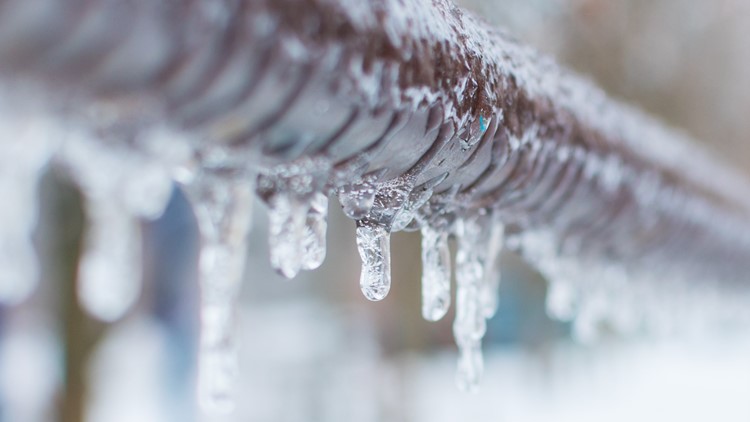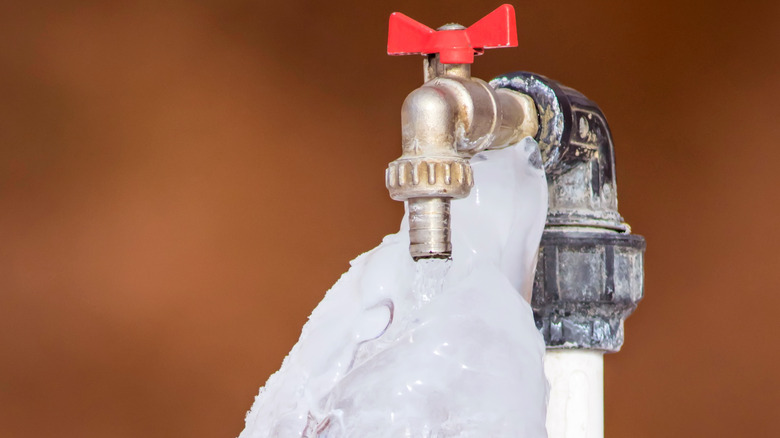How to Protect Plumbing System from Cold Weather: Critical Advice
How to Protect Plumbing System from Cold Weather: Critical Advice
Blog Article
Right here down the page you can discover a good deal of really good answers pertaining to 6 Ways to Prevent Frozen Pipes.

Cold weather can damage your pipes, particularly by freezing pipes. Here's exactly how to avoid it from taking place and what to do if it does.
Intro
As temperature levels decline, the threat of icy pipelines rises, possibly bring about pricey repair work and water damages. Recognizing how to avoid frozen pipes is important for property owners in cold climates.
Avoidance Tips
Shielding prone pipes
Cover pipes in insulation sleeves or use warmth tape to secure them from freezing temperatures. Concentrate on pipes in unheated or exterior areas of the home.
Home heating methods
Keep interior rooms sufficiently heated, particularly areas with plumbing. Open up cupboard doors to permit warm air to distribute around pipelines under sinks.
How to identify icy pipelines
Look for reduced water circulation from faucets, uncommon smells or sounds from pipes, and visible frost on revealed pipes.
Long-Term Solutions
Structural modifications
Think about rerouting pipelines away from exterior walls or unheated locations. Include extra insulation to attics, basements, and crawl spaces.
Upgrading insulation
Invest in premium insulation for pipelines, attics, and walls. Proper insulation helps maintain regular temperature levels and lowers the danger of frozen pipes.
Protecting Exterior Pipes
Garden hoses and exterior taps
Disconnect and drain pipes yard hoses prior to wintertime. Install frost-proof faucets or cover outside taps with protected caps.
Understanding Icy Pipes
What creates pipes to ice up?
Pipelines freeze when revealed to temperatures listed below 32 ° F (0 ° C) for extended periods. As water inside the pipelines freezes, it broadens, taxing the pipe walls and possibly creating them to burst.
Dangers and problems
Icy pipes can result in water disruptions, building damages, and expensive repair work. Burst pipes can flood homes and trigger substantial architectural damages.
Indications of Frozen Water Lines
Determining frozen pipes early can prevent them from breaking.
What to Do If Your Pipelines Freeze
Immediate actions to take
If you presume icy pipes, keep taps open up to soothe stress as the ice melts. Use a hairdryer or towels soaked in warm water to thaw pipes slowly.
Verdict
Protecting against frozen pipes needs proactive measures and fast reactions. By recognizing the causes, indicators, and safety nets, homeowners can secure their plumbing during winter.
6 Proven Ways to Prevent Frozen Pipes and Protect Your Home
Disconnect and Drain Garden Hoses
Before winter arrives, start by disconnecting your garden hoses and draining any remaining water. Close the shut-off valves that supply outdoor hose bibs and leave the outdoor faucet open to allow any residual water to drain. For extra protection, consider using faucet covers throughout the colder months. It’s also important to drain water from any sprinkler supply lines following the manufacturer’s directions.
Insulate Exposed Pipes
Insulating your pipes is an effective way to prevent freezing. Pipe insulation is readily available at home improvement stores and is relatively inexpensive. Pay close attention to pipes in unheated areas such as the attic, basement, crawl spaces, or garage. Apply foam insulation generously to create a buffer against the cold. You can also wrap your pipes in heat tape or thermostat-controlled heat cables for added warmth.
Seal Air Leaks
Inspect your home for any cracks or openings that could let in cold air. Seal any holes around the piping in interior or exterior walls, as well as the sill plates where your home rests on its foundation. Additionally, make sure to keep your garage door closed unless you’re entering or exiting. Leaving it open creates a significant air leak that can lead to frozen pipes.
Allow Warm Air Circulation
During cold snaps, it’s essential to allow warm air to circulate evenly throughout your home. Leave interior doors ajar to promote better airflow. Open kitchen and bathroom cabinets to help distribute heat consistently around the rooms. If you have small children or pets, be sure to remove any household chemicals or potentially harmful cleaners from open cabinets for safety.
Let Faucets Drip
A small trickle of water can make a big difference in preventing ice formation inside your pipes. When temperatures drop significantly, start a drip of water from all faucets served by exposed pipes. This continuous flow helps prevent the water from freezing. Additionally, running a few faucets slightly can relieve pressure inside the pipes, reducing the chances of a rupture if the water inside does freeze.
https://choateshvac.com/6-proven-ways-to-prevent-frozen-pipes-and-protect-your-home/

Hopefully you liked our post about Prevent Frozen Pipes . Thanks a ton for taking a few minutes to browse our short article. Appreciated our entry? Please quickly share it. Help another person find it. Thank-you for your time invested reading it.
Free Estimate Report this page